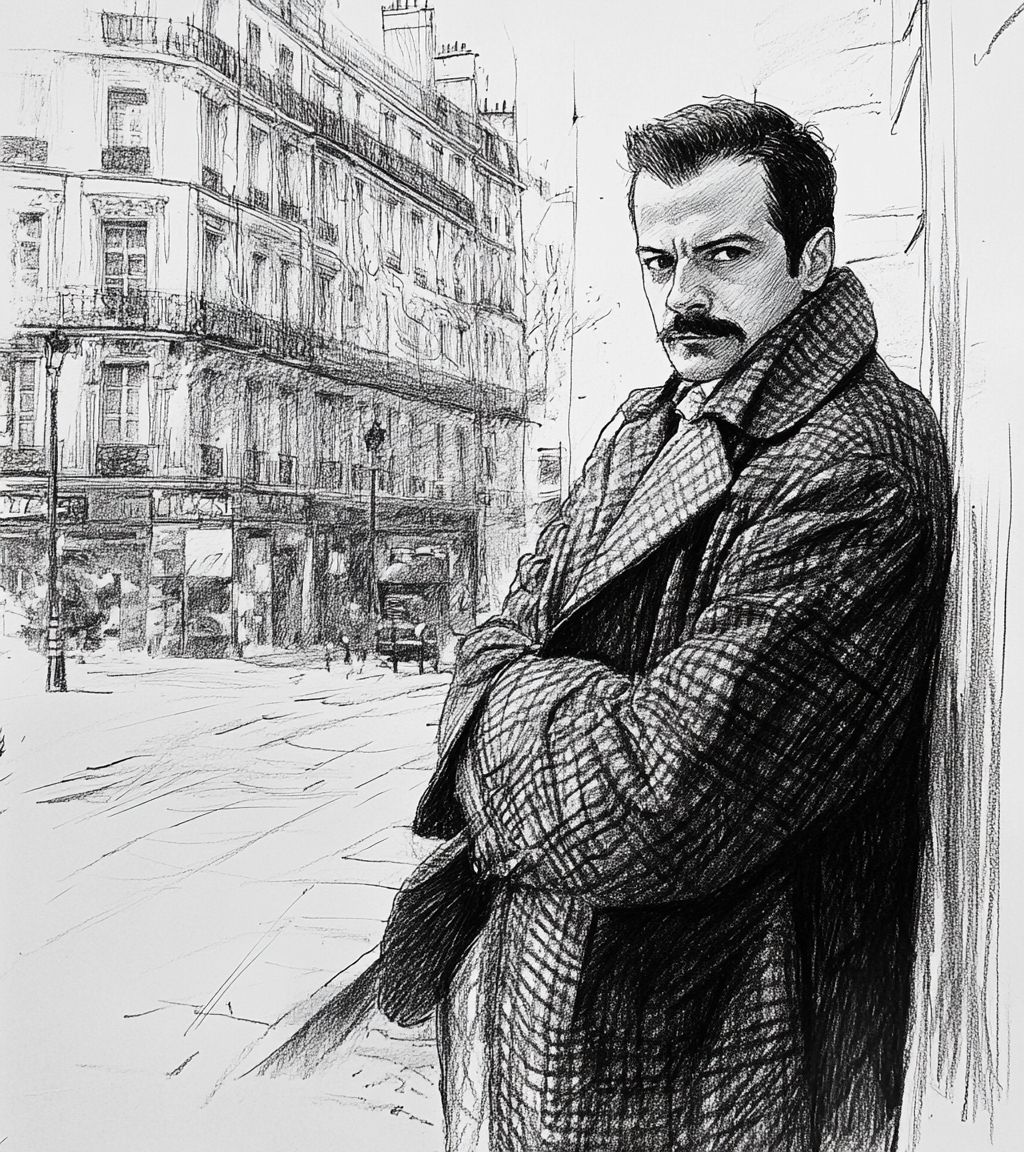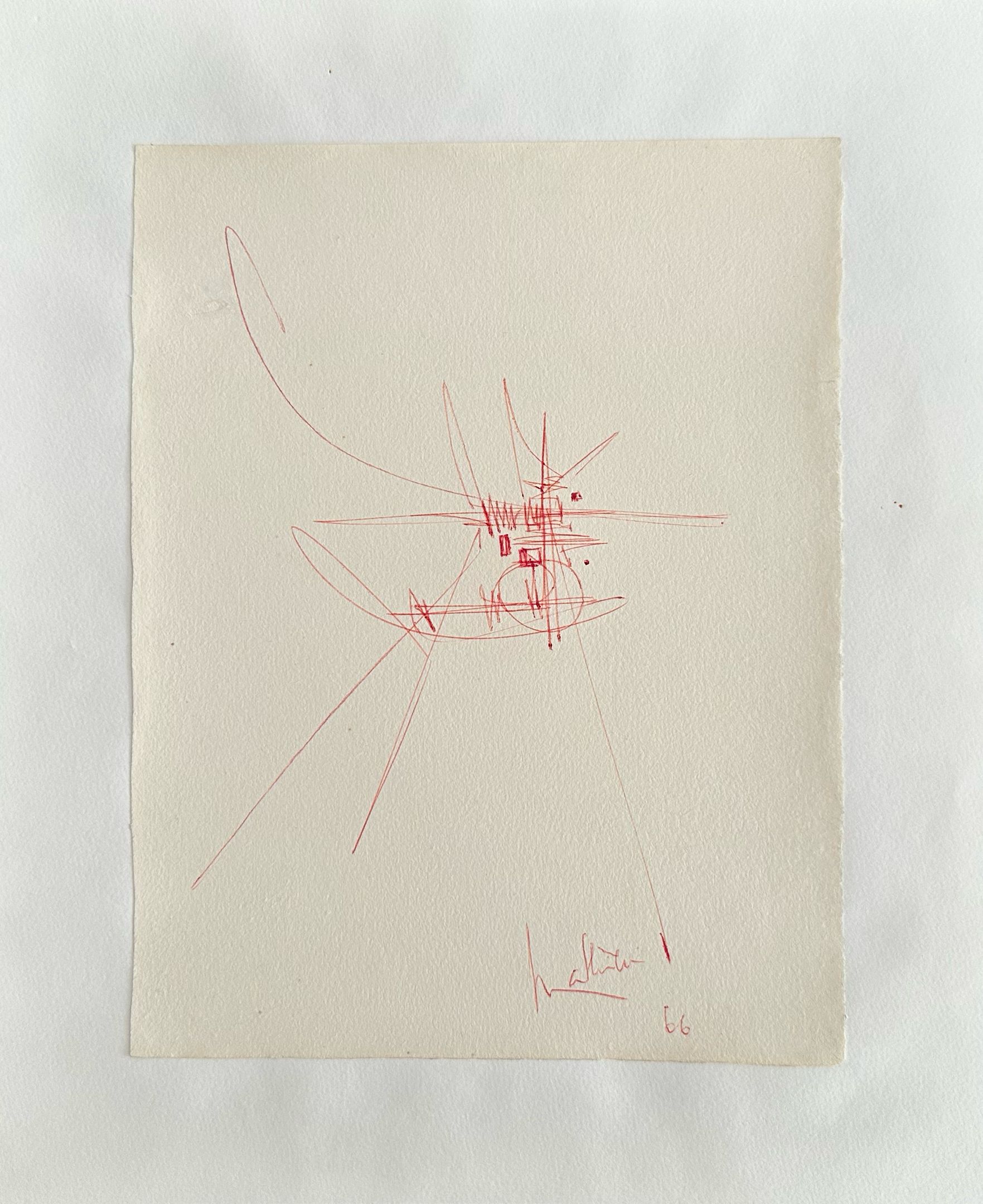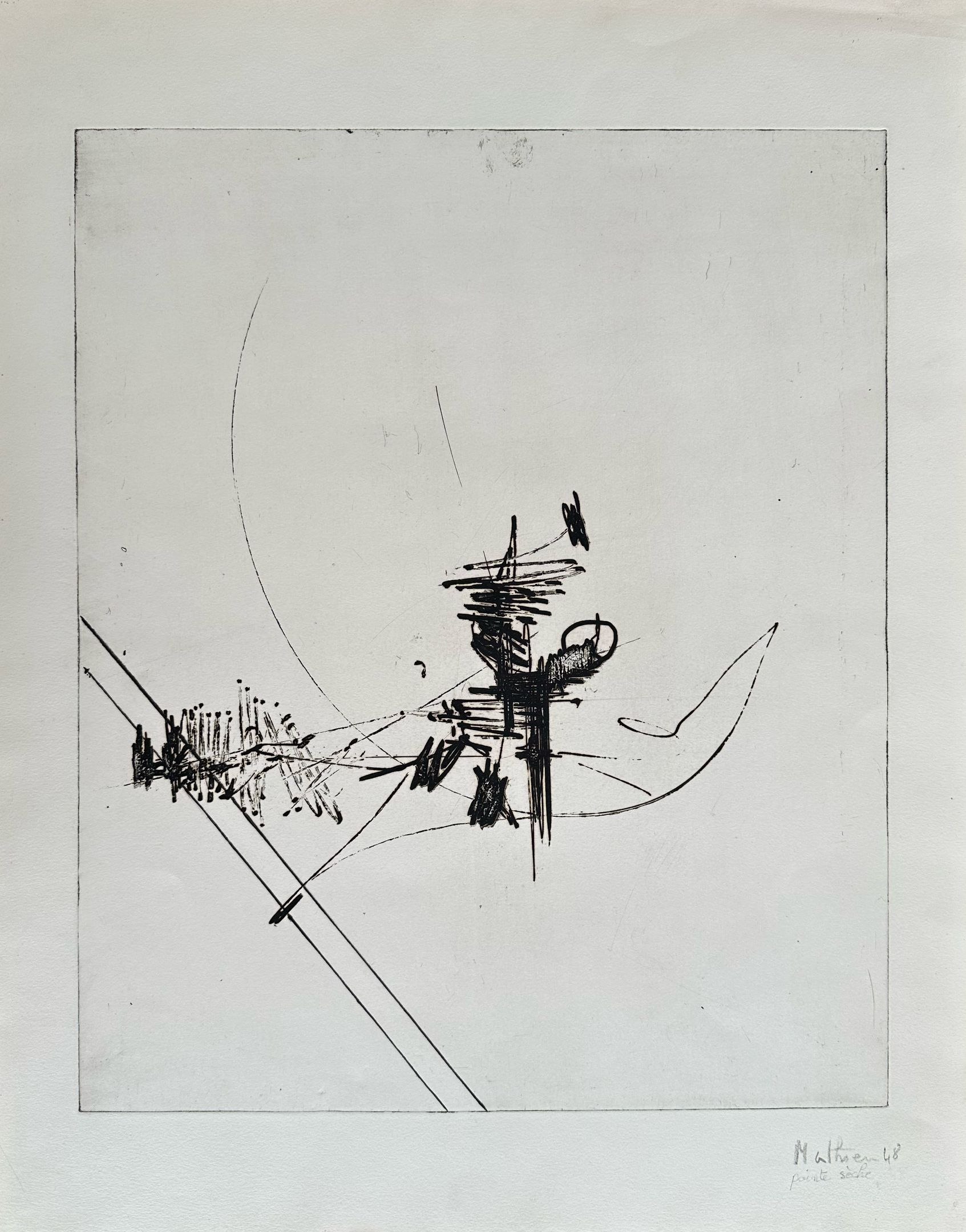
Georges Mathieu
Georges Mathieu initially studied law and literature before shifting his focus to painting during the 1940s. Moving to Paris in 1947, he quickly became a central figure in the emergence of lyrical abstraction, organizing groundbreaking exhibitions like L’imaginaire (1947) and HWPSMTB (1948). Through these, he brought together artists such as Hans Hartung, Francis Picabia, and Wols, advocating for a spontaneous, emotional approach to abstraction. He soon gained international recognition through live painting performances, where he would create large-scale canvases in front of audiences using expressive, rapid techniques.
Mathieu’s painting style is characterized by explosive, calligraphic gestures created at great speed, often using paint applied directly from the tube. Influenced by Surrealist automatism and American action painting, his dynamic compositions prioritize intuition, energy, and immediacy over formal structure. As a pioneer of "tachisme" — the European counterpart to abstract expressionism — Mathieu’s works often reference French history and myth, with titles alluding to battles, monarchs, and philosophical themes. His practice blurred the lines between painting and performance, positioning the act of creation as an expressive and even spiritual event.
Mathieu represented France multiple times at the Venice Biennale starting in 1950. He also participated in four editions of Documenta. His works have been shown in major retrospectives across Europe and Asia, including a celebrated 2024 exhibition at the Long Museum in Shanghai and a major survey at Monnaie de Paris in 2025, organized in collaboration with Centre Pompidou. Galleries such as Perrotin have also hosted shows of his work in cities like New York and Seoul, reaffirming his legacy as a visionary of postwar European abstraction.
Collected by major institutions and notable private collectors:
— Tate— Art Institute of Chicago
— Centre Pompidou
— Musée d’Art Moderne de Paris
Notable sales and auction records:
— Tuz Gölü 圖茲鹽湖, HKD 18,3 million at Sotheby's, Hong Kong, 2021— Souvenir de la maison d’Autriche (Remembering the House of Austria), USD 2,2 million at Christie's, New York, 2020
— La Bataille des Éperons d’or, EUR 1,8 million at Piasa, 2023
Artworks and Paintings
Biography and Artistic Career Highlights
Georges Mathieu was born on January 27, 1921, in Boulogne-sur-Mer, France, into the family of a bank employee. His childhood unfolded in a calm provincial environment. In his youth, he showed an interest in the humanities, studying literature, philosophy, and law, but gradually became increasingly fascinated with painting. Despite lacking formal academic art education, he began experimenting early with form and color.
1942 — earned a degree in English from the University of Lille, taught for a time, while simultaneously painting.
1944 — moved to Paris, where he immersed himself in the city’s cultural life and began working actively as an artist.
1947 — held his first solo exhibition, where his desire to move away from figuration toward free gesture was already evident.
1947–1948 — discovered American Abstract Expressionism, especially the work of Jackson Pollock, which influenced the development of his method.
1949 — organized the exhibition «L’Imaginaire», presenting artists oriented toward abstraction. During these years, Mathieu became one of the leaders of the «Lyrical Abstraction» movement.
1950s — reached the height of his popularity: he staged public painting performances, creating canvases before audiences. His use of speed, expression, and theatricality made him a forerunner of happenings and performance art.
1956 — major exhibition at the Stable Gallery in New York, which secured his reputation as an international artist.
1960s — created monumental works, including commissions for state and corporate interiors. His art became associated with the fusion of energy, speed, and historical allusions: many of his canvases were named after events and figures from French history.
1962 — retrospective at the Museum of Modern Art in Paris.
1970s — actively exhibited in Japan and the United States; during this period, Mathieu drew closer to Eastern calligraphy, which influenced his painting.
1980s — continued producing large-scale canvases, blending lyrical abstraction with decorative qualities. At the same time, he engaged in theoretical publications on the role of the artist in society.
1990s — gradually reduced his activity due to health problems, yet remained a significant figure in French culture.
On June 10, 2012, Georges Mathieu died in Boulogne-Billancourt, near Paris, at the age of 91. His work became a symbol of French «Lyrical Abstraction» and had a notable influence on the development of performative painting and international abstract art in the second half of the 20th century.


